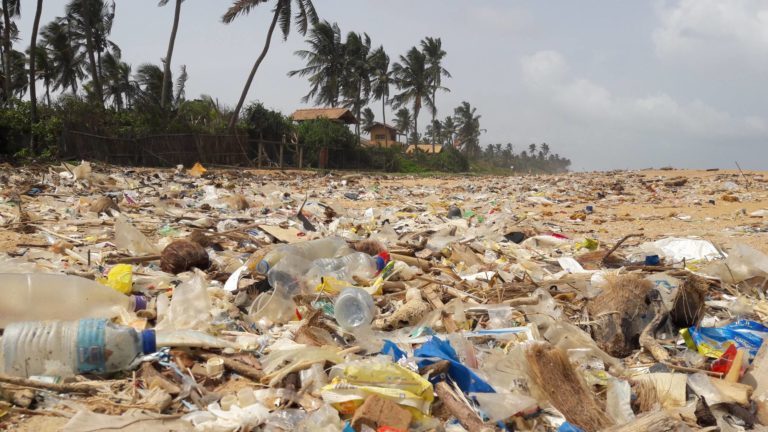
“Within a Chain of Lifeforms”: Sujit Sivasundaram on Interspecies Frontiers, Microscopic Records, and Waves Across the South
Stefan Hanß: Sujit Sivasundaram is Professor of World History at the University of Cambridge and Fellow of Gonville and Caius College Cambridge. His work on the eighteenth-century Indian and Pacific Oceans is of breathtaking innovativeness and brings global history and the history of empires into a conversation with the history of science, environmental history, and the history of race and ethnicity. Most recently, Sujit Sivasundaram published a thought-provoking Past & Present article on the history of interspecies encounters between pangolins and humans, which also discusses the future of historical research in light of the current pandemic. In this interview, Sujit Sivasundaram took the time to respond to a few follow-up questions on the role of microscopic records in future research on interspecies histories.
Early modern colonial encounters dynamised human-animal and animal-animal encounters. You co-edited a fascinating special journal issue on “nonhuman empires”. In your recent Past & Present article, you argue that the early modern period was a crucial time for re-negotiating the settings of what you call “interspecies frontiers”: the accelerated human intrusion into global wildlife shaped unstable human-animals relationships that increased the potential for zoonotic transfers. This line of thought prompts historians to reconsider early modern colonialism as affecting all kinds of different livelihoods, human and non-human. This opens fascinatingly new avenues of research. Reflecting on your own trajectory as a researcher, what do you consider the potential for future research on the history of nonhuman empires?
Sujit Sivasundaram: Well, it was just after I finished my doctoral work on the entanglements of science and religion in South Pacific islands between the voyages of Cook and Darwin, that I first started to work in a sustained fashion on animals. During my doctoral work, which gave rise to Nature and the Godly Empire, I had been interested in the differing cosmologies and values attached to animals by Pacific islanders, scientist-naturalists and Christian missionaries and how nature became a battle ground for conversion, ‘improvement’, ‘civilisation’ and finally imperial encroachment. It was with this perspective that I wrote an article, ‘Trading Knowledge’ which was about the barter of knowledge about elephants (and the exchange of real elephants too who were transported from India to Britain) as a way of exploring the rise of the East India Company’s stranglehold on South Asia. This was fun to write and as a result I still advise my doctoral students to take a break after their PhD and consider writing on something quite different.
In retrospect, this article made me attentive to animal agency: How, for instance, were elephants transported on ships affected by the length of the voyage? Why and how did an elephant wish to rampage through the streets of London after being kept in captivity? Yet, fundamentally, the article was much more a human to human history of the animal (what is the relation between South Asians’ knowledge, for instance around the god Ganesh, and British colonial knowledge about the supposedly docile elephant?) than an animal-centred history or an animal to human history of colonisation. It was only more recently, about five years ago, then in collaboration with Rohan Deb Roy that I became interested in the frontier between the animal and the human and the material complex of the animal/human. I theorised this as central to the articulation of the idea of race (for instance in assemblies of human and animal skulls in colonial collections or in the multiply-transgressive accounts of ‘wolf children’ in rural India). It is from this perspective and while in lockdown due to covid-19, that I began to wonder about zoonotic transfer and the interspecies frontier once again. The Past and Present viewpoint is the result. Here I argue not only for how this frontier is productive in intellectual terms (as for instance for the idea of race as I argued before), but rather that the material dynamics (when and how pangolins are collected and domesticated and how pangolins respond) can also be generative. Going forward, it is definitely the case that if we are to understand the nature of the interspecies frontier, we will need to attend not only to ideas and materials but also to microscopic exchanges (including the exchange and mutation of viruses).
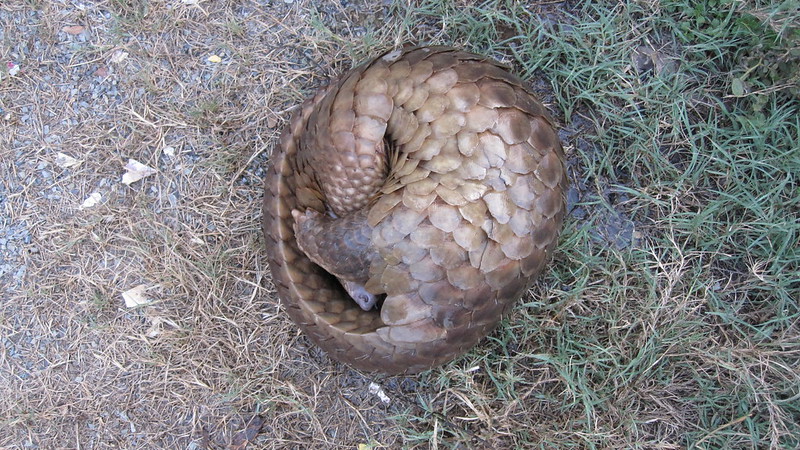
A pangolin at the heart of the interspecies frontier. Image credit: Wildlife Alliance via Flikr under a CC licence.
SH: The upcoming British Academy event Microscopic Records: The New Interdisciplinarity of Early Modern Studies, c. 1400–1800 will discuss the role of small-scale materiality in shaping early modern history, as well as the possibilities of future collaborations between the humanities and the sciences to explore the history of microscopic records. You emphasized that “a post-pandemic historiography will surely be interdisciplinary, with critical, philosophical and collaborative engagement with scientists,” and that “this collaboration would be in keeping with the call to include more historical agents in the stories that we tell.” How can we include microscopic records, thus, small-scale materiality as historical agent in the history of interspecies encounters?
SS: I don’t have a full answer to this question as it is one that needs a long debate. Some of the reviewers of the viewpoint piece made the case that it is impossible to write the history of the virus as agent. But I tend to disagree. I wonder about these questions: What does the virus want? How is it mutating? How is the interspecies frontier setting the terms for the virus? I don’t wish to be reductionist about disease history. After all an earlier generation of scholars of colonial ‘impact’ were critiqued for doing exactly this in writing of the Columbian exchange for instance. In keeping with my earlier work on the animal/human complex, what I would like to see is attention to the virus within a chain of lifeforms, including bigger beings such as humans and animals and smaller entities in turn beneath the level of the virus (such as the spike of SARS CoV-2). I would like this chain of things to be set within the structures of colonisation and capitalism rather than being simply the outworkings of a romanticised posthumanism. If we have a series of different scales and types of material living things in view, we may be able to build a different history of colonisation and its effects. We may also then be able to make space for indigenous knowledge, a long-standing concern of mine, from a different angle. Indigenous peoples are at the frontier of the climate emergency and their engagements with nature need to be approached as part of a differently-organised system of life (quite separate from how colonisation and capitalism have generated virus exchanges or classified humans and animals or changed the interspecies frontier through encroachment into biodiverse areas).
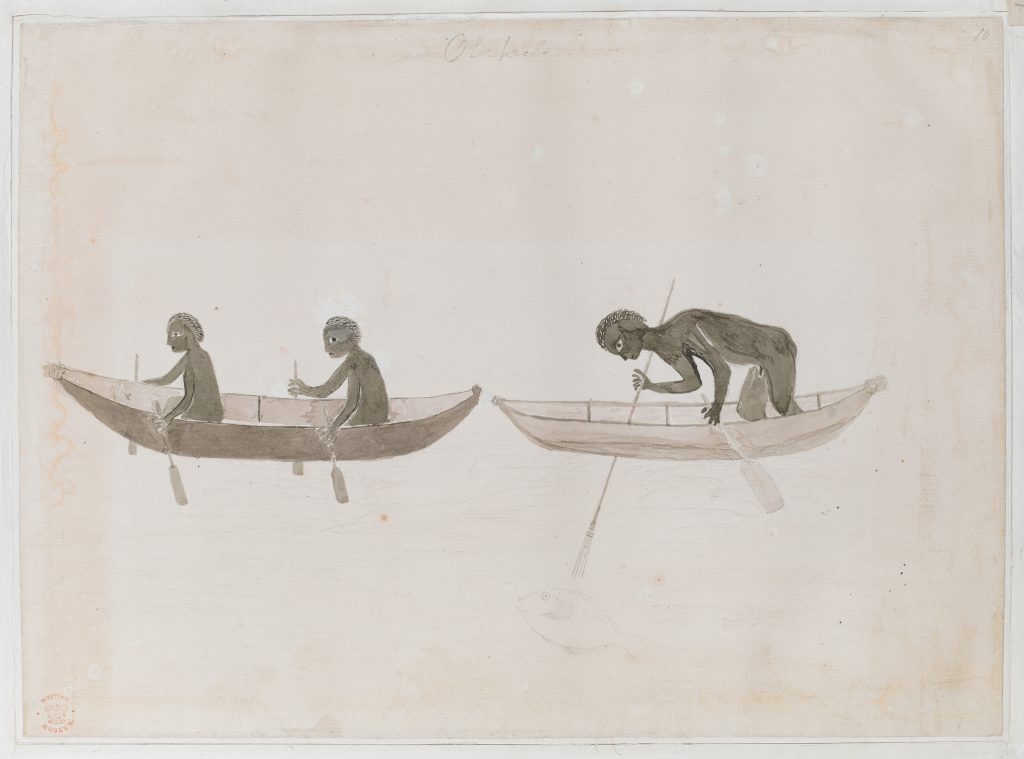
Aboriginal Australians in two canoes drawn by Tupaia, c. 1770. Image credit: British Library, MS 15508, f. 10, public domain.
SH: A discussion of taxonomies, human intrusion in wildlife, as well as biopiracy in the early modern colonial age is one way of addressing the role of small-scale materiality in relation to interspecies frontiers, colonialism, and the origins of capitalism. The seventeenth and eighteenth centuries, one might say, were the age of global empires, colonialism, and taxonomies. In the Dutch colonial worlds of Africa, the Americas, and Asia, for example, West and East India Company servants ventured epic-scale expeditions aiming at the exploration and classification of natural environments. Hendrik van Rheede (1636–1691), administrator of the Dutch East India Company and governor of Dutch Malabar, pioneered the description and classification of plants in his Hortus Malabaricus which was, in fact, an imperial enterprise involving all kinds of colonial protagonists and in-betweens. Georg Rumpf’s multi-volume opera on the plants of Ambon Island is another striking example for the interdependencies of imperial and scientific worlds. How can we think empire-making and scientific practices in the eighteenth-century Indian and Pacific Oceans in relation to microscopic records, thus, the small-scale world of material environments? Can we think about early scientific ‘explorations’, botanical research, and natural history studies as a form of classification and exploitation that targeted local microscopic records? Were environmental microscopic records part of what John F. Richards called “the unending frontier” of early modern environmental invasions?
SS: A lot will ride on what is meant by ‘microscopic records’ for there is a danger of being Eurocentric with this category. But I like ‘records’ because it is capacious as a term—it might include songs and chants, cures and therapies, genealogies and histories or collected natural materials of all kinds. Do you approve of such an interpretation?
SH: This is an excellent and important observation! Yes, I think of ‘microscopic records’ as sites of negotiation both in historical and heuristic terms. Being attentive to minute details shall problematise our understanding of causation one the one hand. On the other, it shall widen the panorama of whom and what we think of as being participative in shaping the currents of history. This, I hope, will also cause historians to reflect on how we do history. Studying early modern history through the lens of microscopic records, in all their variety, helps revealing a history of what anthropologist Anna L. Tsing called “sites of more-than-human dramas”. Ultimately, this can also shed new light on an increasingly globalised early modern world. Exploring such a past—pasts, indeed, entangled with flows and counterflows—will hopefully also help developing less static narratives about history as constantly evolving encounters.
SS: I hope so. Focussing on the microscopic may also get around the issue that indigenous knowledge is too often seen as local, specific and targeted compared to the wide theorising about natural laws which characterises science. Rather and in contradiction, all knowledge is made out of information about the micro (that of the voyaging scientist in the Pacific who dredges material from the sea as much as the indigenous islander who recites a genealogy about the origins of his or her home island as it arose from the sea). And thinking carefully about the micro in this way can certainly allow us to reconsider the eighteenth-century invasion in these seas. Roaming Westerners pirated and stole the microscopic biodiversity of these regions in as much as they annexed islands.
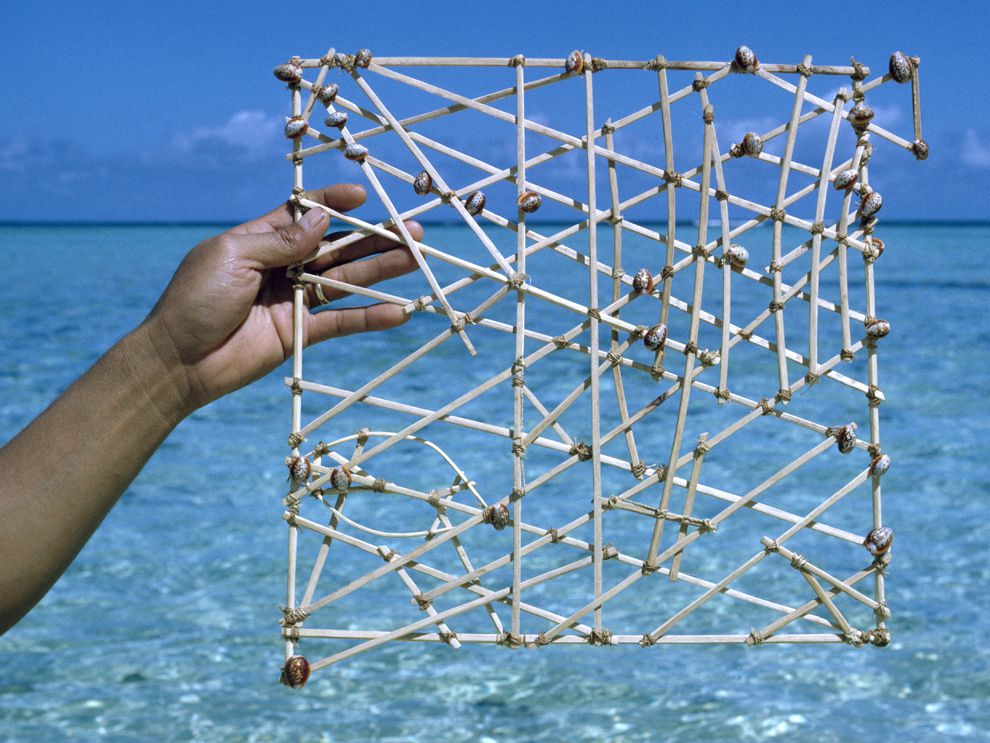
Used for navigating the Pacific Ocean, this ‘Micronesian map’ shows patterns of waves and currents alongside islands and atolls. Image credit: National Geographic, photograph by Walter Meayers Edwards.
SS: So, yes, to answer your earlier question, they did target these records. But beyond this, to understand what happened next, we might track the micro as many historians are already doing in scientifically studying materials still in herbaria, or closely analysing archives of visual illustrations or in attending to the findings of historical archaeologists in the Indian and Pacific Oceans. Bringing these perspectives together will be a way of thinking through the long-term consequences of the theft of the micro while also understanding the precise power-relations as well as the relative room to manoeuvre that was open to differing living agents and things. Personally, I should add my view that this kind of analysis should now move beyond earlier concerns with hybridity, cosmopolitanism and syncretism. That was the first wave of talking about what you wish to call the microscopic exchanges in the eighteenth- and nineteenth-century Indian and Pacific Oceans around science and empire. Tracking the micro like this might also be a way of putting into practice a point that I often make about science and empire in these two oceans: they are difficult to separate and we should not think about cause and effect as so many historians have done. Rather the entanglement between politics, knowledge and trade can be tracked by following the movement of small things. And by the way, the texts you mentioned come rather a way into the story and after these small things move.
SH: In a co-edited volume on Oceanic Histories as well as in your forthcoming monograph Waves Across the South: A New History of Revolution and Empire (Harper Collins), you emphasise the significance of waves for writing the history of global encounters. In this question, I wish to align waves with microscopic records: did the pulses of the seas also connect early modern small-scale material worlds? Can we explore the global journeys that plant seeds, insects, and other hardly visible passengers took on the waves across the early modern globe?
SS: Thanks for picking up on the notion of the wave. I’ve found it to be immensely useful to my thinking and writing on the Indian and Pacific Oceans. Perhaps it arises from growing up five minutes away from the Indian Ocean, close to a polluted beach in Colombo. That experience made me attentive to all the stuff that washes up on the shore (certainly all kinds of junk and coconut husks too). That beach in Colombo still has human waste running across it from inland to the sea as well as a canal full of industrial waste that empties itself into the ocean.
For me the wave is what connects all of this matter with far-away places, so that debris from across the Indian Ocean can end up quite somewhere else. But certainly as you say it is not only about pollutants, it is also the coconut tree which can germinate across the sea through the waves (I wrote a whole section on the coconut tree in Islanded). But building outwards it is not only the micro but also the human and the ideological which passes on these waves.

Coastal pollution in Sri Lanka. Image credit: Terney Pradeep Kumara/Marine Environment Protection Authority via Mongabay.
SS: In my new book, one of the first images is connected to the unloading of Australian horses in Madras [Chennai] in the midst of a breaking wave. The challenge was to work from such a perspective which is material to redefine the age of revolutions in these seas, a key period of course of the late eighteenth and early nineteenth centuries. In intellectual terms, I find the wave useful because it materialises the connections across the Indian and Pacific Oceans. I really dislike the word ‘network’ which has been used so much in recent world histories. Waves instead can break and form and they are essentially uneven. They can be sequential as well as unpredictable and very violent. They can cross over short distances as well as over whole seas. They are in keeping with the friction that Tsing emphasises too. The connection they gesture to is not a human cosmopolitanism (or at least not this kind of cosmopolitanism alone), rather the breaking violence of waves is in view in the new book. This natural power can be tamed by human colonists, but colonisation can in turn be cut to size for instance as ships are wrecked. Meanwhile revolutionary ideologies and modes of resistance can also pass across the waves and in turn are passed in a specific environmental and material context. It is in this sense that the wave works as a route into a new way of considering the age of revolutions in these seas of islands.
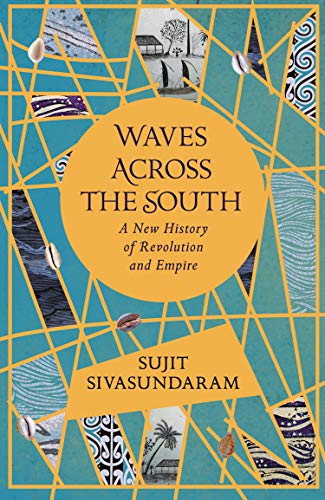
Sujit Sivasundaram’s new monograph, Waves Across the South, has been published this month.
SH: The way you describe this beach in Colombo and its impact on your intellectual trajectory reminds me of a journal article called ‘Theory Adrift: The Matter of Archaeological Theorizing’. Here, archaeologists took drift matter on the Arctic shore as a starting point to reflect on the materiality of theories: their constant floating and becoming out of the stuff we encounter; them “not (being) natives of any particular territory, but nomads in a mixed world.” Focusing on waves surely helps developing a more materially grounded theory and understanding of connectivity, mobility, and frictions in history. You do so in your most recent monograph Waves Across the South, which has been released this month. This volume has been praised as “a new history of the making of our world.” How would you describe the main contribution of this monograph to the wider debates on oceanic histories?
SS: Well that’s a question I could give a long answer to but let me try to be brief. It is an attempt to move away from the Euro-Atlantic and its dominance in the story of the age of revolutions. It also foregrounds indigenous peoples of a range of cultural heritages from the Indian and Pacific Oceans. It brings an environmental and natural historical lens to the changes of this era and this is in keeping with the way I see oceanic histories more broadly. It is researched in various oceanic sites in the global South too and it was a story that evolved as I travelled across these regions. But given the focus in our conversation on materials, I should say that it is a materialised history. I argue that the competing forces of revolution and empire are materialised as contending and breaking waves, never reaching full completion but trying to outwit the other in this southern hemispheric zone. Materials that arrive on the waves then—weapons, ships, scientific instruments, letters and the press—can be put to local use even as their movement on the unstable medium of the sea means that the result that arises at ‘arrival’ may be unpredictable and locally-determined.
Further reading:
Armitage, David, Alison Bashford and Sujit Sivasundaram, eds., Oceanic Histories (Cambridge: Cambridge University Press, 2017).
Deb Roy, Rohan and Sujit Sivasundaram, eds., Nonhuman Empires, special issue of Comparative Studies of South Asia, Africa and the Middle East 35 (2015).
Pétursdóttir, Þóra and Bjørnar Olsen, ‘Theory Adrift: The Matter of Archaeological Theorizing’, Journal of Social Archaeology 18, no. 1 (2018): 97–117.Richards, John F., The Unending Frontier: An Environmental History of the Early Modern World (Berkeley: University of California Press, 2003).
Sivasundaram, Sujit, Islanded: Britain, Sri Lanka and the Bounds of an Indian Ocean Colony (Chicago: University of Chicago Press, 2013).
Sivasundaram, Sujit, Nature and the Godly Empire: Science and Evangelical Mission in the Pacific, 1795-1850 (Cambridge: Cambridge University Press, 2005).
Sivasundaram, Sujit, ‘The Human, the Animal and the Prehistory of COVID-19’, Past & Present (2020, in press). Cf. https://www.cam.ac.uk/stories/covid-19-interspecies-frontier-history-with-pangolins.
Sivasundaram, Sujit, Waves Across the South: A New History of Revolution and Empire (London: Harper Collins, 2020).
Tsing, Anna L. The Mushroom at the End of the World: On the Possibility of Life in Capitalist Ruins (Princeton: Princeton University Press, 2015).
Sujit Sivasundaram, The University of Cambridge.
Stefan Hanß, The University of Manchester.






0 Comments